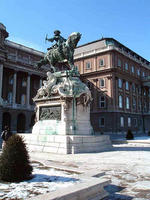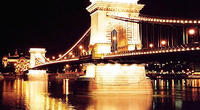You are in: Europe -> Hungary -> Budapest, including ... , and traditional search or Image Gallery will yield results of this site only
Budapest, including the Banks of the Danube, the Buda Castle Quarter and Andrássy Avenue
| Site number: | 400 |
|
| Type of site: | Cultural | |
| Date: | 1 AD | |
| Date of Inscription: | 1987, 2002 | |
| Location: | Europe, Hungary, Budapest | |
Up to 75 images are shown here. Click on each for more details or on Image Gallery for more images.
Six official UN languages:
Arabic,
Chinese,
English,
French,
Russian,
Spanish
Other languages: Alemmanic German, Aragonese, Asturian, Bosnian, Bulgarian, Catalan, Chuvash, Croatian, Czech, Danish, Dutch, Esperanto, Estonian, Finnish, Galician, German, Greek, Hungarian, Icelandic, Indonesian, Italian, Japanese, Korean, Latvian, Lithuanian, Luxembourgish, Macedonian, Norwegian-bokmål, Norwegian-nynorsk, Occitan, Polish, Portuguese, Romanian, Serbian, Slovak, Swedish, Thai, Ukrainian, Serbo-Croatian
Other languages: Alemmanic German, Aragonese, Asturian, Bosnian, Bulgarian, Catalan, Chuvash, Croatian, Czech, Danish, Dutch, Esperanto, Estonian, Finnish, Galician, German, Greek, Hungarian, Icelandic, Indonesian, Italian, Japanese, Korean, Latvian, Lithuanian, Luxembourgish, Macedonian, Norwegian-bokmål, Norwegian-nynorsk, Occitan, Polish, Portuguese, Romanian, Serbian, Slovak, Swedish, Thai, Ukrainian, Serbo-Croatian
| Description: | The inscribed site maintains the remains of some considerably influential monuments that inspired architecture of various successive periods (some of the monuments - the Roman city of Aquincum and the Gothic castle of Buda). This is one of the most outstanding urban landscapes of global significance and illustrates the great periods in the Hungarian capital’s history. --WHMNet paraphrase from the description at WHC Site, where additional information is available. | |
| Budapest (Hungarian IPA: is the capital city of Hungary and the country's principal political, cultural, commercial, industrial and transportation centre. Aquincum, originally a Celtic settlement, was the direct ancestor of Budapest, becoming the Roman capital of Lower Pannonia. Magyars arrived in the territory in the 9th century. Their first settlement was pillaged by the Mongols in 1241-42. The re-established town became one of the centers of Renaissance humanist culture in the 15th century. Following the Battle of Mohács and nearly 150 years of Ottoman rule, development of the region entered a new age of prosperity in the 18th and 19th centuries, and Budapest became an alpha world city after the 1873 unification. Widely regarded as one of the most beautiful cities in Europe, its extensive World Heritage Site includes the banks of the Danube, the Buda Castle Quarter, Andrássy Avenue, Heroes' Square and the Millennium Underground Railway, the second oldest in the world. The Castle Hill, the River Danube embankments and the whole of Andrássy út have been officially recognized as UNESCO World Heritage Sites. --Wikipedia. Text is available under the Creative Commons Attribution-ShareAlike License. | ||
| Source: | http://whc.unesco.org/en/list/400 | |
| Reference: | 1. UNESCO World Heritage Center, Site Page. | |












































































